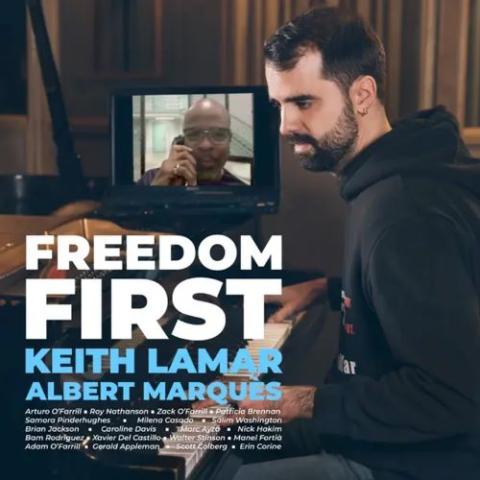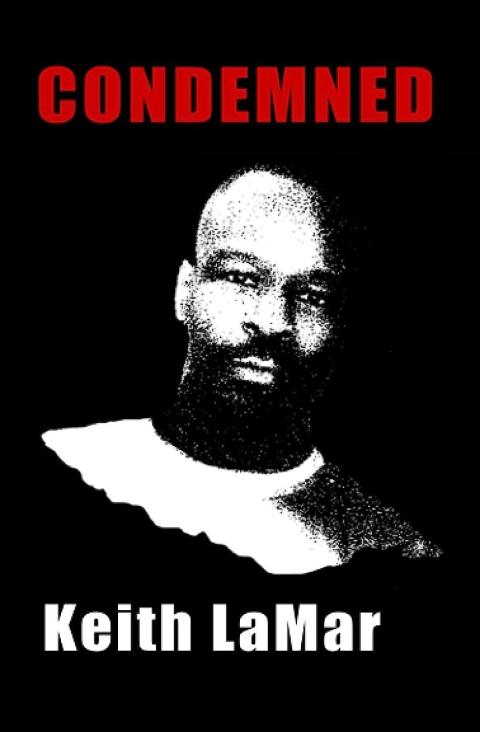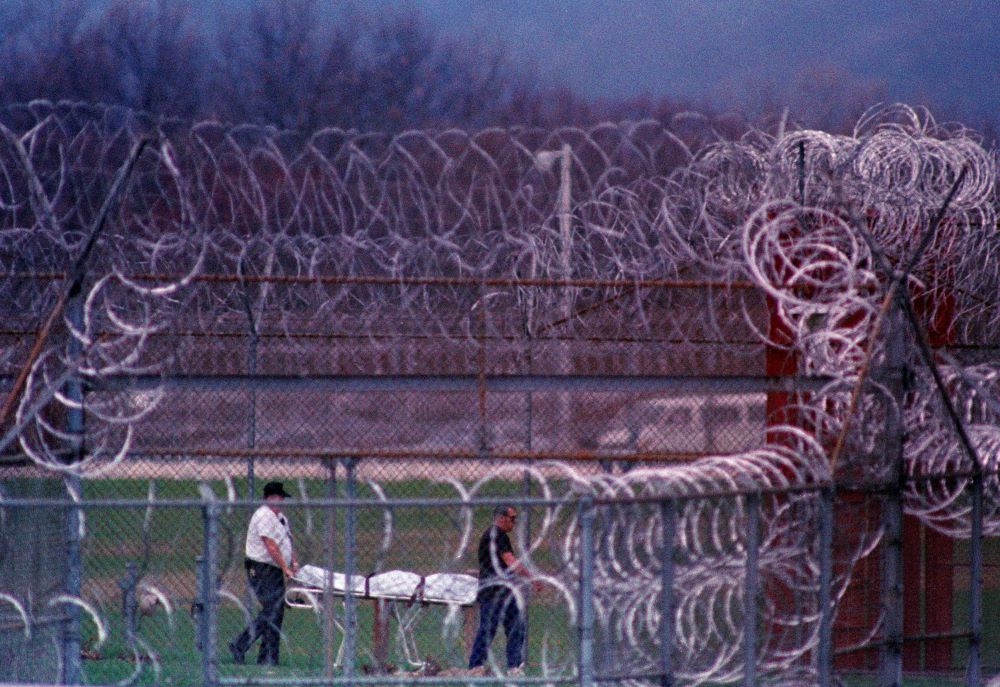
In this April 13, 1993, file photo, the body of the seventh prisoner killed in a riot at the Southern Ohio Correctional Facility in Lucasville, Ohio, is removed. On April 11, 1993, Easter Sunday, some 450 prisoners in Cellblock L at the maximum-security facility started a riot that would become one of the longest in U.S. history. Over 11 days, nine inmates and a prison guard died. (AP/Chris Kasson, file)
Keith LaMar released his first album, with pianist Albert Marquès, in 2022. The two received an award for the project and the following year LaMar was a featured narrator for "The Healing Project" at Carnegie Hall. He is an author, advocate and performer, but what is most remarkable is that LaMar has accomplished all these feats from his prison cell on death row in Ohio.
I first met LaMar in 2021 for an in-depth, three-part interview published on the Black Catholic Messenger website. LaMar grew up in a segregated, impoverished neighborhood in Ohio and became involved in the drug trade to support himself as a young teenager. He was imprisoned at age 19 for killing a man who had tried to rob him. LaMar maintains it was self-defense.

Keith LaMar, shown in this undated file photo provided by the Ohio Department of Rehabilitation and Corrections, was sentenced to death for killing five inmates during a 1993 prison riot. LaMar says he was wrongly convicted. (AP/Ohio Department of Rehabilitation and Corrections)
When he was 25, he was convicted by an all-white jury for killing five inmates during the 1993 Lucasville prison riot and sentenced to be murdered by the state. (LaMar has said he was not inside the prison at the time of the murders.) LaMar's book, Condemned, and the extensive coverage of his case in "The Real Killer" podcast documented the prosecutorial errors and concealed evidence that support his claim of wrongful conviction.
When I spoke with LaMar again in 2023 ahead of his Nov. 16 execution date, he said he was fighting for his life. "I'm going up against a system that is fully equipped to kill me. I mean, if you've read anything about the history of this country, you know that these people, if they're good at anything, they're good at killing people, very proficient at doing that. So I don't have any illusions about that. And yet, people have rallied around me. So I'm not by myself in the slightest. So that makes a lot of difference."
(The Ohio Supreme Court July 13 delayed LaMar's execution to Jan. 13.)
However, if it is up to a bipartisan group of state senators, Ohio may become the 24th state to abolish the death penalty. On May 28, Senate Democratic Leader Nickie Antonio and Republican Sen. Stephen Huffman introduced a bill to replace the death penalty with life in prison without parole.
Though Huffman previously supported the death penalty, like the official Catholic Church teaching, his stance has changed. "I believe that as a devout Catholic, the death penalty is wrong — based on there should be one being that decides if you live or die. And that's the Lord, and it's not a judge," he told an Ohio television station.
In 2018 Pope Francis revised the Catechism of the Catholic Church to formally change the church's position on the death penalty. The catechism now states "in the light of the Gospel, that the 'death penalty is inadmissible because it is an attack on the inviolability and dignity of the person' and she works with determination for its abolition worldwide."
However, what is lesser known about the death penalty is how it disproportionately targets Black people — especially those convicted of killing white victims — and its relationship to the sordid American practice of lynching and racial terror against Black Americans.
Though African Americans, like LaMar, make up only 14% of the American population, they are 41% of the death row population. In Ohio, more than half the death row prisoners are Black.
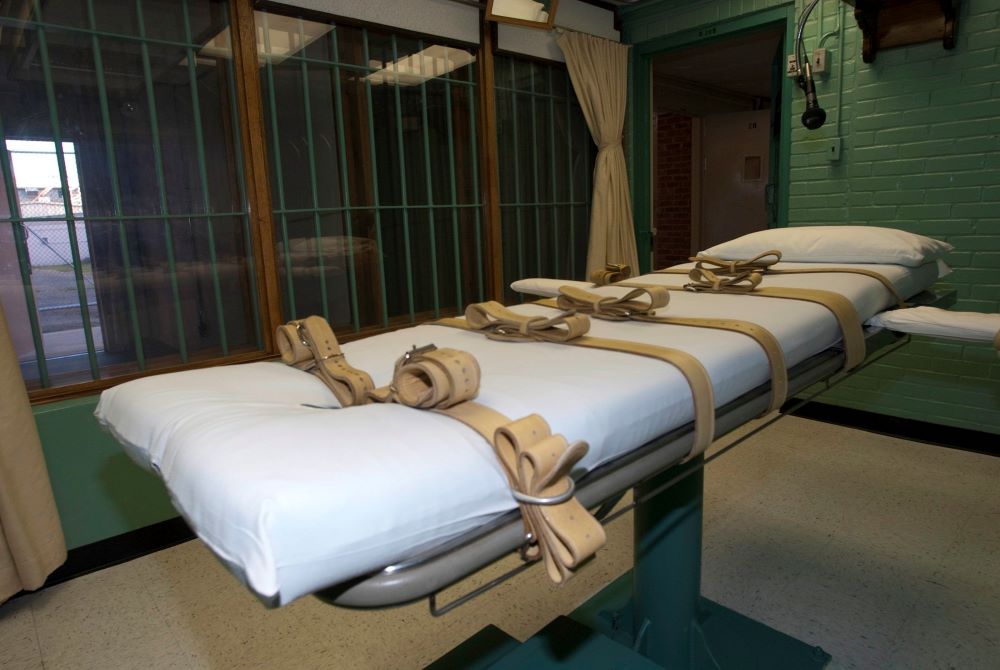
A death chamber table is seen at the state penitentiary in Huntsville, Texas, in this file photo from 2010. Ohio Gov. Mike DeWine has declared an unofficial moratorium on the death penalty in the state after a federal judge likened Ohio's lethal injection process to a combination of waterboarding, suffocation and exposure to chemical fire. (OSV News/Reuters/Courtesy of Jenevieve Robbins, Texas Department of Criminal Justice handout)
Study after study has confirmed the racial disparity inherent in capital punishment sentences. "In comparing interracial murders since 1977, you get a shocking disparity of 304 African-American defendants having been executed for murders of white victims, compared to only 21 white defendants having been executed for murders of African Americans," said Krisanne Vaillancourt Murphy, executive director of Catholic Mobilizing Network, which advocates against the death penalty and for restorative justice.
Murphy believes that today's application of capital punishment in the United States "is a direct byproduct of our national histories of slavery and lynching."
Though the term "lynching" evokes images of a Black person hanging from a tree, the NAACP defines lynching as any public killing of an individual who has not received any due process. Lynching was a form of extrajudicial racial violence used predominantly against Black men as a form of social control and punishment after the end of Reconstruction. The Equal Justice Initiative has documented almost 6,500 racial terror lynchings from the end of the Civil War to 1950.
Black people were lynched in many brutal ways, including torture, mutilation, burning, decapitation, castration, drowning and desecration. Black men could be lynched for consensual relationships with white women, perceived threats or disrespect of white people, failure to pay debts, or if they asserted their agency and challenged white dominance socially or economically.
Yet the decline of lynching in America corresponded with the increased use of capital punishment, according to Equal Justice Initiative's Executive Director Bryan Stevenson, writing in Policing the Black Man. The disproportionate killing of African American men at the hands of white men didn't cease; it became state-sanctioned.
LaMar has called his trial and death sentence a modern-day lynching, comparing it to the hundreds or even thousands of white people would attend lynchings of Black people in the 20th century, take pictures and buy souvenirs. Although the courtroom was empty throughout his trial, on sentencing day, "it was just packed wall to wall with white people," he said. "They showed up, like they've been showing up throughout history.”
He maintains his innocence and is fighting for a new trial with new attorneys from Beldock, Levine & Hoffman, the firm that represented the Central Park Five, Rubin "Hurricane" Carter and Eric Garner's family.
Ohio Gov. Mike DeWine has declared an unofficial moratorium on the death penalty in the state after a federal judge likened Ohio's lethal injection process to a combination of waterboarding, suffocation and exposure to chemical fire. DeWine has been issuing reprieves to those scheduled to be executed.
Allison Cohen, executive director of Ohioans to Stop Executions, expects the unofficial moratorium to last at least until DeWine’s term ends in January 2027. Meanwhile, advocates against the death penalty continue to work to free innocent inmates.
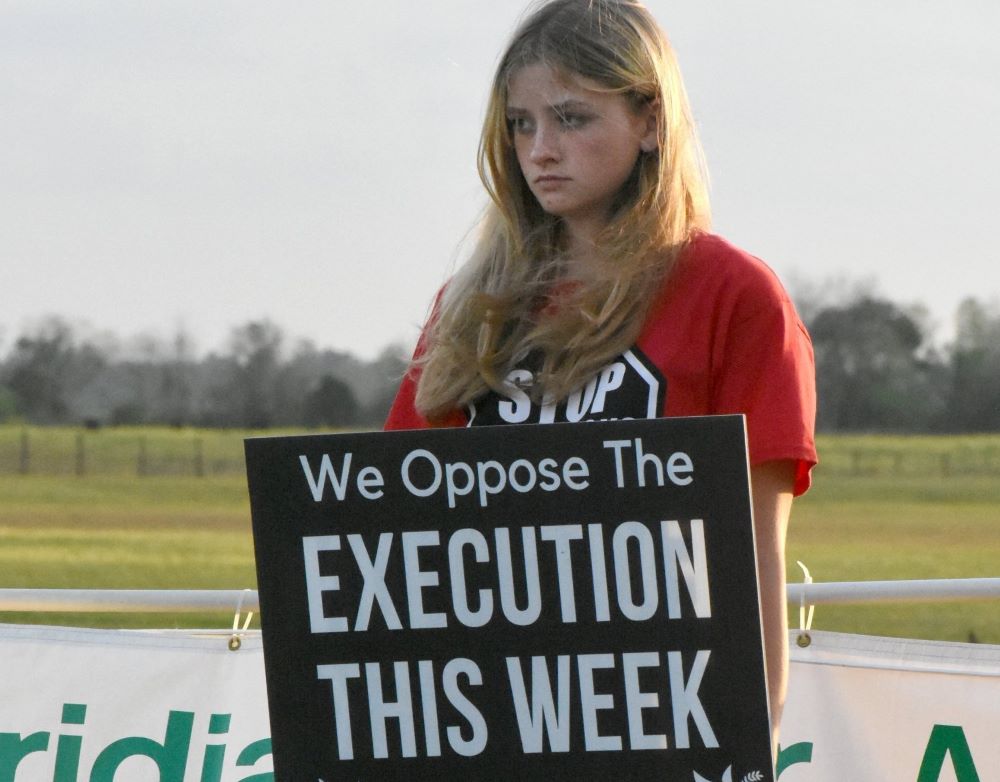
A student from Lourdes Academy Catholic School in Daytona Beach, Florida, protests the death penalty in front of the Florida State Prison Feb. 23. The Florida Conference of Catholic Bishops wrote a May 31 letter to Gov. Ron DeSantis, who is Catholic, asking him to stay the execution of death-row inmate Duane Owen and commute his sentence to life without parole. Florida executed Owen by lethal injection June 15. (OSV News/Florida Catholic/Glenda Meekins)
"There is an epidemic of innocent people on Ohio's death row," said Cohen, noting that more than 11 men have been exonerated in the state, with many more remaining on death row with "serious questions" surrounding their guilt or innocence.
Since 1973, 189 people convicted and sentenced to death by capital punishment have been exonerated, according to the Death Penalty Information Center. Of those exonerated, 103 were Black.
In spite of the documented cases of innocent people being killed by capital punishment, Florida Gov. Ron DeSantis, who is Catholic, has signed a bill eliminating the need for unanimous jury decisions in death penalty cases, which the Florida ACLU has called racist and unconstitutional. Florida has the highest number of death row exonerees in the country — 30 people since 1973.
Advertisement
Some believe life imprisonment is the only alternative to a death sentence, but Pope Francis has called it "a secret death penalty."
The Catholic Mobilizing Network advocates for restorative justice, which Murphy describes as "a way of responding to harm that centers the unique needs of the people who were impacted, rather than focusing on the law or rule that was broken."
"This transformative approach is rooted in the belief that every person — regardless of the harm they've suffered or caused — deserves to be treated with dignity and given the opportunity to transform hurt and suffering into healing and wholeness," she said.
LaMar is the epitome of the redemption and transformation possible when a person is given the opportunity to turn from their mistakes and create a lasting impact on the lives of others. Through his literacy project, Native Sons, he's worked to educate and inspire other young people who could end up on a path like his or who may one day be sitting on a jury. Engaging with people, young and old, allows LaMar to maintain his humanity in a prison system intent on denying it.

